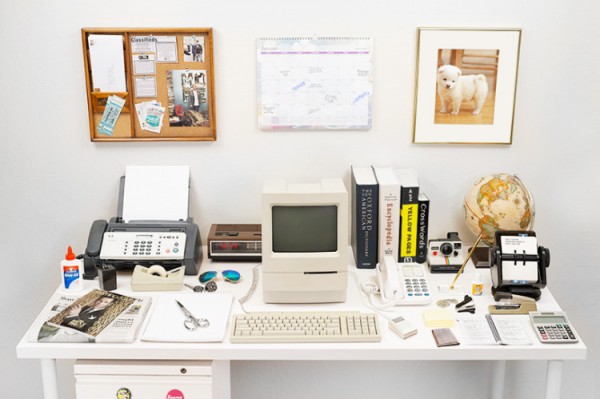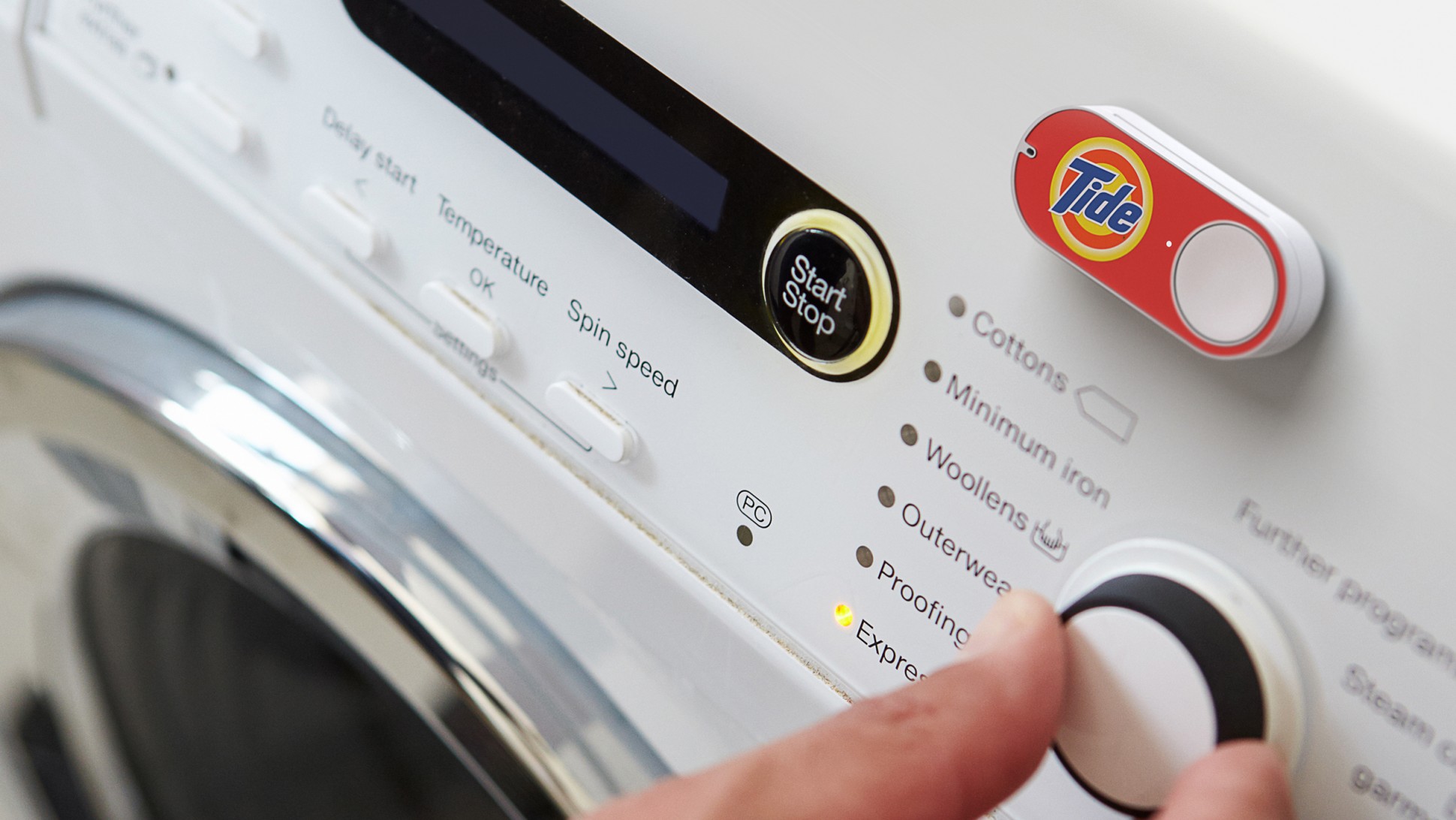Smartphones turned hardware into software
The two pictures below illustrate how the smartphone changed our everyday life. We moved from a fully covered desk to one with only a laptop and smartphone.


After Apple introduced the App Store, we have seen waves of new apps. Lately, however, the interest in apps started to fade. Firstly, through (Chat)bots, app in apps and instant apps we see a tendency towards fewer installed apps. Secondly, hardware companies have been working in a somewhat reversed direction of the two pictures shown above. New devices in the form of GoPros and Spectacles are bringing back cameras to our desks, and VR headsets give us a second screen for smartphones. But there are also new devices which did not exist before the smartphone.
IoT devices such as buttons, cubes, bricks and headphones are decentralizing our smartphones
There are several smart devices, connected to smartphones, that carry out particular tasks on the connected phone. Here I want to give a short overview of some of them.
Smart buttons, cubes, bricks and other devices can either be tailored to individual use cases or generally applicable
Amazon’s Dash: The Dash is a button that is assigned to one particular item available on Amazon. When you press the button it will order that item from Amazon. Its USP is that it removes a lot of friction. Instead of
- getting the phone
- unlocking it
- opening the Amazon app
- ordering detergent
- locking the phone
- putting it away
We simply have
- Pressing the Dash assigned to “detergent”

An Amazon Dash assigned to "Tide" attached to a washing machine (Source)
And whereas the Dash is tailored to only one use case (shopping) other products, like the Flic, can be utilized for a broader range of applications.
Flic: The Flic, a wireless smart button, is very similar to the above-mentioned Amazon Dash. The main difference is that it can be programmed to run certain actions or applications on your phone. One way to use it is to toggle a smart light bulb like which you alternatively would have to do via an app.

Using flic in your car (Source)
For even more complex use cases we can use gadgets like the ZEIº or Daily Stack.
The ZEIº by Timeular is 8-sided cube used for time tracking where each side equals a particular task. Time tracking is a rather tiring process, but with a physical device like the ZEIº, we can reduce the whole process to flipping the cube to the right side.

ZEI° for tracking tasks (Source)
Daily Stack: Daily Stack is a physical to-do list where you add tasks by placing wooden bricks onto each other. Not only helps it visualize your tasks better, but it also removes friction by the necessity to mark tasks in an app which has to found, opened, etc.

Daily Stack for organizing your to-dos (Source)
Smart speakers and smart headphones are introducing voice as the new UI
Smart speakers such as Amazon Echo or smart headphones (hearables) such as Apple’s AirPods or Bragi‘s The Dash allow you to activate your phone’s voice assistant by tapping on them, meaning that you can get directions, call a friend or start your favorite playlist without taking your phone out. Amazon Echo/Dot and Google Home are making it, even more, frictionless by being always on. 
Using Apple's AirPods with voice control (Source)
Through IoT devices, we are moving toward ubiquitous computing by using our smartphone’s hardware less but its functionality more
Based on these examples you can see that smartphone companies are decentralizing your smartphone’s functions to places around you. For most of it, your smartphone will be some link, but will gradually blend out of your life and become less intrusive. Its functions, on the contrary, will become more present. This is a fascinating path towards ubiquitous computing and has two implications.
Firstly, with portable devices like hearables or wide-range listening devices like the Amazon Echo, these devices will be exactly where and when you need them. They will be ubiquitous.
Secondly, this decentralization will remove a lot of friction. By “friction” I mean that instead of six steps (like in the example for the Dash) you will have only one.
Source of the header image: http://static2.businessinsider.com/image/57d195acb996eb97008b6a6b-1200/airpods-have-accelerometers-that-can-sense-that-youre-talking-and-filter-out-background-noise-microphones-at-the-bottom-of-each-airpod-can-pick-up-your-voice-which-works-for-both-phone-calls-and-using-siri.jpg